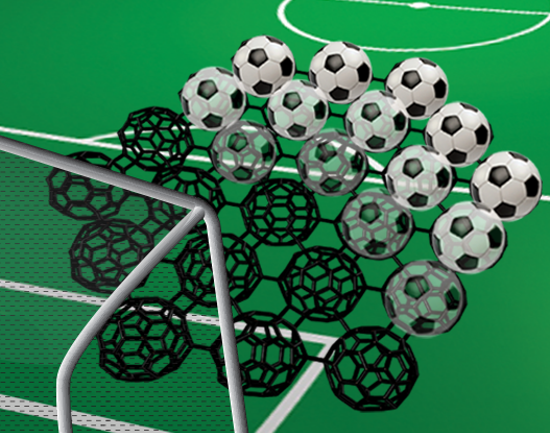A modular form of carbon, graphullerene, made up of layers of fullerenes with graphullerite crystals, has been discovered by researchers at Columbia University. Why this is so exciting to the energy industry and makers of semiconductors requires an understanding of the evolution of the carbon constituents that make up this new material.
Before graphullerene we had the following:
- Graphite which is a crystalline form of carbon that is best known for its use in pencils (the misnomered lead) and as a lubricant.
- Graphene which is a form of carbon arranged as a molecular lattice with very strong bonds between the atoms. Graphene makes very hard, super-resistant coatings. It also is used in lithium-ion batteries, sensors, supercapacitors, and wind and solar panels.
- Fullerene is named after Buckminster Fuller, the architect who created the geodesic dome. A fullerene consists of carbon atoms formed into a stable mesh resembling a geodesic dome but obviously, very tiny. It can be found in medical and pharmacology products and in solvents and antioxidants. Fuillerenes can be combined with drugs to help expedite medication delivery and used similarly for gene therapy. Other uses incorporate the material into eyewear, photonic devices, solar cells, sensors, and as hardening agents in coatings.
The three above are precursors to the latest discovery of two new materials coming out of research being done at Columbia University. These are graphullerite, a crystalline form of carbon that is stronger than graphene and fullerene. Graphullerite crystals are pure carbon and charge-neutral which makes them very attractive for use in semiconductors. And graphullerene is a superatomic cousin of graphene consisting of superlinked fullerenes that form a spherical mesh which can be combined in layers of pure peelable carbon crystal.
To what use can these new materials be put?
Graphullerenes incorporated into new kinds of optical and electronic devices will be able to withstand much higher currents and temperatures with the material an effective dissipator of heat. This thermal conductivity property continues to be critical in semiconductors’ evolution as more transistors get packed into tinier spaces.
It is likely that graphullerene will replace fullerene in many future solar, wind, battery, and sensor products, that is until the next big carbon material advance. This new form of carbon, state its discoverers, being both light, and strong will make photonic and electronic devices more durable and capable because the tunable superlattice structure is better suited to where superconductors and electronics are headed.
A description of the work done by the Columbia University researchers appears in the January 4, 2023 edition of the journal Nature in an article entitled “A few-layer covalent network of fullerenes.”









